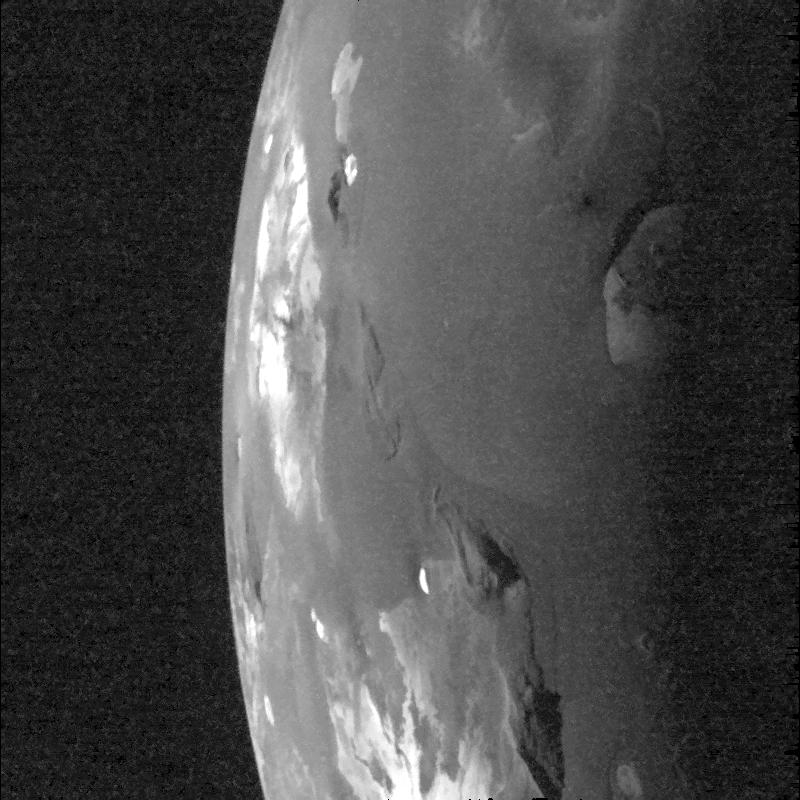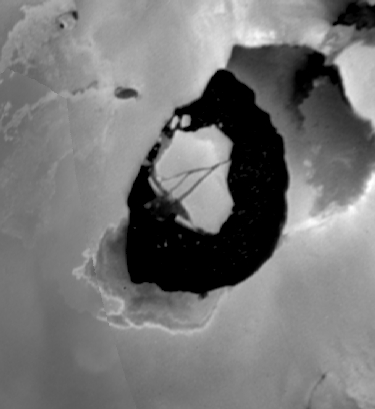

This image of Io was taken by NASA's Galileo spacecraft on 16 October 2001, as the sun set on Loki Patera (upper right). The image, which shows several smaller paterae (volcanic craters) as well as shadows cast by the high peaks of several mountains (the setting sun illuminates the surface from the left), was taken in an attempt to determine the depth of the giant patera Loki. Galileo caught Loki near the terminator, the boundary between day and night. Shadows cast by the low sun should reveal any topography associated with Loki, such as a plateau in the center of the patera or high patera walls. The near absence of shadows in this region caught Galileo scientists by surprise, as they had expected much more pronounced topography near Loki.
Another surprising aspect of this image is that features that have been black in previous Voyager and Galileo images of Loki,

such as the dark lava flows inside of the patera, are here brighter than their surroundings. The best explanation for this phenomenon is that the shiny, glassy surfaces of chilled lava flows look extremely dark when the sun is directly overhead, but they reflect the sun's light comparatively well when it shines at a low angle, in a similar manner to the reflective surfaces of bodies of water. Other volcanic paterae in this image show the same unusual reflectance that is seen at Loki; some of these paterae are being viewed at such angles that reflections from lava flows within them are the brightest features in the image. This image tells us that lava flows on Io chill quickly and form glassy surfaces, not unlike recently cooled lava flows on Hawaii.
The image has a resolution of 1.1 kilometers (0.7 miles) per picture element. North is to the top of the picture.
Image produced by: Jani Radebaugh, Planetary Image Research Lab. (PIRL), Lunar and Planetary Lab. (LPL), University of Arizona
The Jet Propulsion Laboratory, a division of the California Institute of Technology in Pasadena, manages the Galileo mission for NASA's Office of Space Science, Washington, D.C. Additional information about Galileo and its discoveries is available on the Galileo mission home page at http://galileo.jpl.nasa.gov/. Background information and educational context for the images can be found at http://galileo.jpl.nasa.gov/images/io/ioimages.html.
NASA's Planetary Photojournal PIA-03530
May 28, 2002